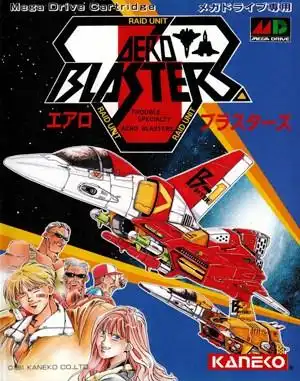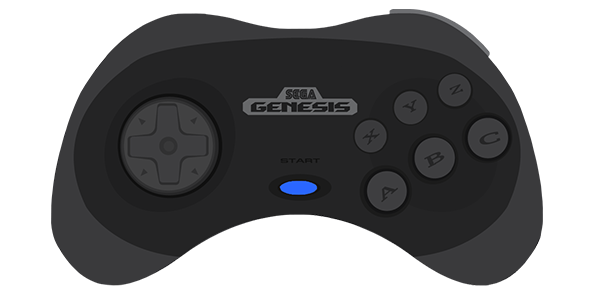Remember Air Busters? A Nostalgic Look Back at the Classic Shmup
Step back in time, fellow retro enthusiasts, to an era when arcades were king and 16-bit consoles battled for supremacy. Amidst the fierce competition, a horizontal scrolling shooter arrived, known in some parts as Air Busters. While maybe not as universally famous as Gradius or R-Type, this gem from Kaneko (and ported by others) carved out its own niche, offering frantic action and some seriously cool pixel art.
But what was Air Busters all about, and why does it still hold a special place in the hearts of some old-school classic games? Let's fire up the consoles and take a trip down memory lane.
A Blast from the Past: What is Air Busters?
Originally hitting arcades in 1990, Air Busters quickly made its way to home consoles, most notably the Sega Genesis (or Mega Drive) and the NEC PC Engine (or TurboGrafx-16 in North America). Here's where things get a little confusing for newcomers: the game was often titled Aero Blasters on the PC Engine/TurboGrafx-16, and sometimes even the Genesis version used this name depending on the region.
Regardless of the title on the box, you were getting a solid horizontal shoot 'em up (shmup). The premise was classic sci-fi: pilot a futuristic ship against an orbiting fortress and its endless waves of mechanical baddies. It was pure, unadulterated arcade fun translated for the living room.
Diving into the Gameplay: Weapons, Stages, and Challenge
At its core, Air Busters stuck to the tried-and-true shmup formula: fly right, shoot everything that moves, collect power-ups, and face off against intimidating bosses.
What set it apart?
- Weapon Variety: You weren't stuck with just one main shot. The game offered a selection of seven distinct weapon types you could switch between. From the multi-directional Six Way Shot to the screen-clearing Striker and the always-useful Homing Shot, finding your favorite loadout was part of the strategy. You also had missile options like Red Rockets and Green Homing Missiles.
- Power-Up Frenzy: The game was pretty generous with power-ups. Defeated enemies and specific carriers would drop upgrades for your main weapon, speed boosts, and even a handy shield item called "Border." Collecting dollar signs added to your score, because who doesn't want virtual cash in space?
- Unique Stages: While some shmups relied on generic themes, Air Busters featured some memorable environments. You'd blast through industrial zones, navigate tight tunnels, and even experience sections with zero gravity that messed with your movement. There were six main stages leading up to the final confrontation.
- The Difficulty Curve: This is where opinions sometimes split. The early stages are often seen as relatively manageable, allowing you to power up and rack up extra lives. However, the difficulty ramps up significantly in the later levels, especially with those zero-gravity sections and increasingly dense enemy patterns and hazards. It could get pretty intense!
The Tale of Two Ports: Genesis vs. PC Engine
For many retro gamers, the memory of Air Busters (or Aero Blasters) is tied to either their Sega Genesis or PC Engine. Comparing these ports was a hot topic back then, and both had their strengths:
- Sega Genesis/Mega Drive: Often praised for being closer to the arcade original in terms of visual detail and sprite size. It featured impressive parallax scrolling, giving backgrounds a sense of depth. The sound was typical Genesis – sometimes gritty, sometimes great depending on the track. Some felt the basic shot was a bit "bursty" compared to the arcade.
- PC Engine/TurboGrafx-16: While maybe not matching the Genesis visually in every aspect (slightly lower resolution/color depth), many players preferred the feel of the PC Engine version. It often felt faster, the scrolling smoother, and the player movement more responsive. A key difference was the respawn mechanic – on the PC Engine, you could often get right back into the action with your power-ups intact, unlike the Genesis or arcade where dying could leave you severely weakened. The PC Engine's HUD placement also gave the main screen a wider feel. The music had its own unique flavor too!
Ultimately, deciding which port was "better" often came down to personal preference and which console you owned. Both offered a fantastic shmup experience.
Why Remember Air Busters Today?
In a genre packed with titans, why does Air Busters still resonate?
- Pure Arcade Action: It captured that feeling of pumping quarters into a machine, translated well to the home consoles.
- Solid Gameplay: Despite some difficulty spikes, the core shooting, dodging, and power-up collection were well-executed and satisfying.
- Nostalgia Factor: For many, it was a staple in their Genesis or TurboGrafx library, a game played countless times with friends or trying to beat their own high score.
- A Worthy Challenger: It stood tall against other shooters of the era, proving that Kaneko could deliver a quality experience.
Finding a physical copy today can be a fun part of the retro collecting hunt. While not readily available digitally on major platforms like GOG (which focuses more on PC classics), the game lives on through emulation and dedicated retro hardware, allowing new generations (or old ones revisiting) to experience its pixelated glory.
FAQ
- Is Air Buster the same game as Aero Blasters? Yes, they are generally the same game, just with different titles used across regions and platforms (Arcade, Sega Genesis/Mega Drive, PC Engine/TurboGrafx-16).
- Who developed Air Buster? The original arcade game was developed by Kaneko. Ports to home consoles were handled by different developers, including Kaneko and Hudson Soft.
- Which version of Air Buster is the best? This is subjective! The Sega Genesis version is often cited as being closer to the arcade visually, while the PC Engine version is often praised for its faster gameplay feel and more forgiving respawn system. It depends on player preference.
Conclusion
Air Busters, or Aero Blasters, is more than just another horizontal shooter from the 90s. It's a well-crafted, challenging, and memorable title that offered exciting gameplay and sparked console debates among friends. Whether you first played it in a smoky arcade, on a bulky Genesis, or via the sleek PC Engine, it remains a fantastic example of the shmup genre during its golden age. If you get the chance, give it a try – it holds up surprisingly well!


